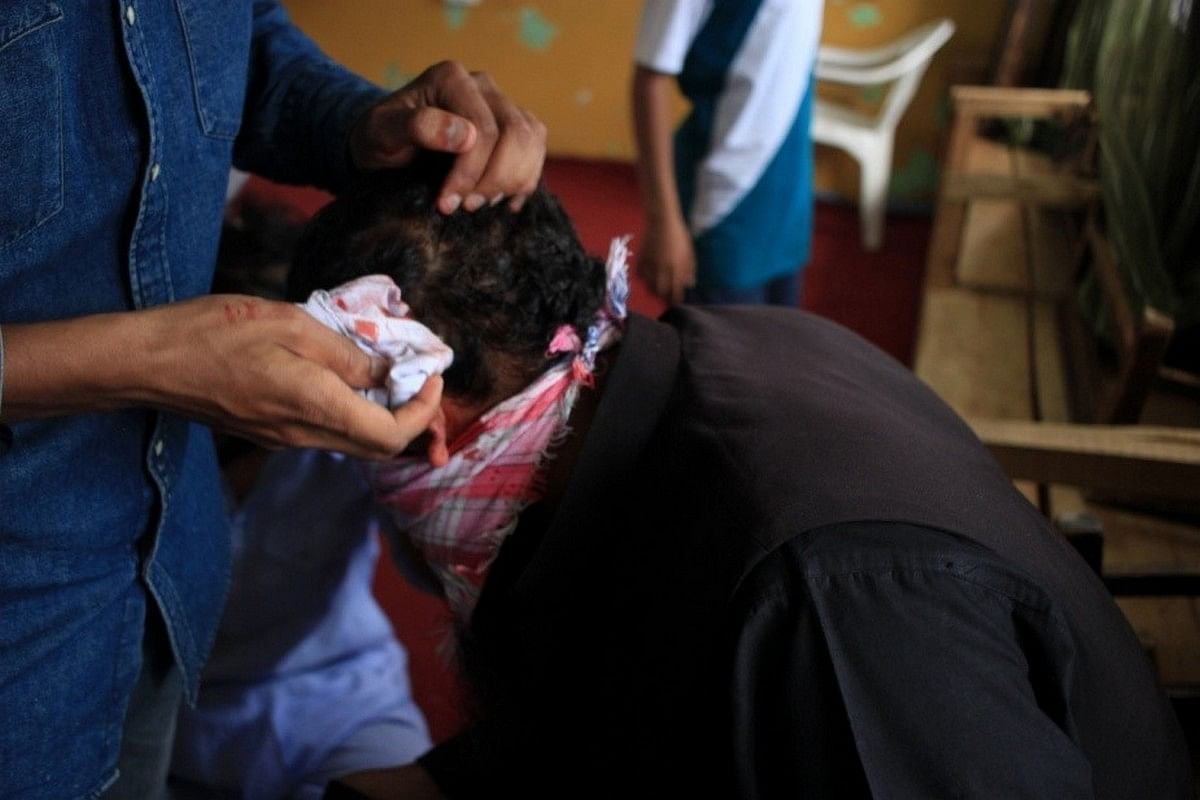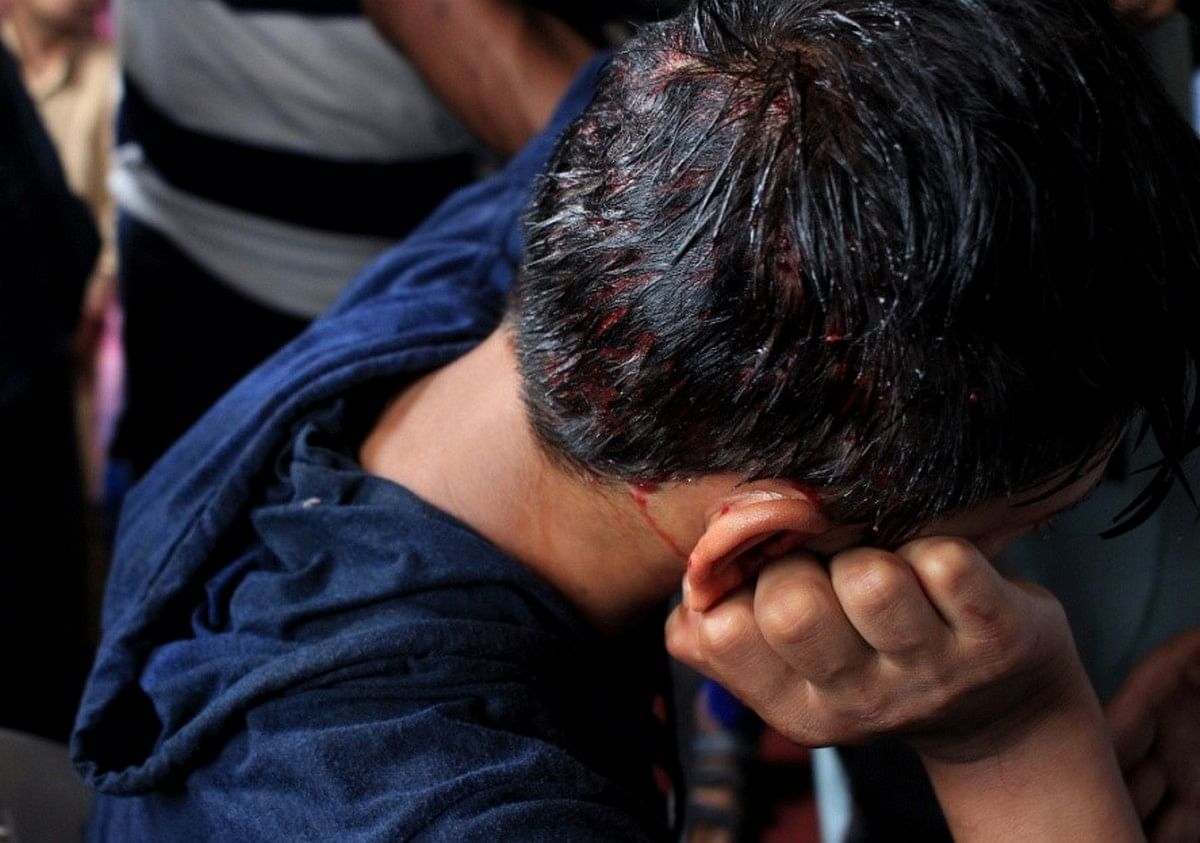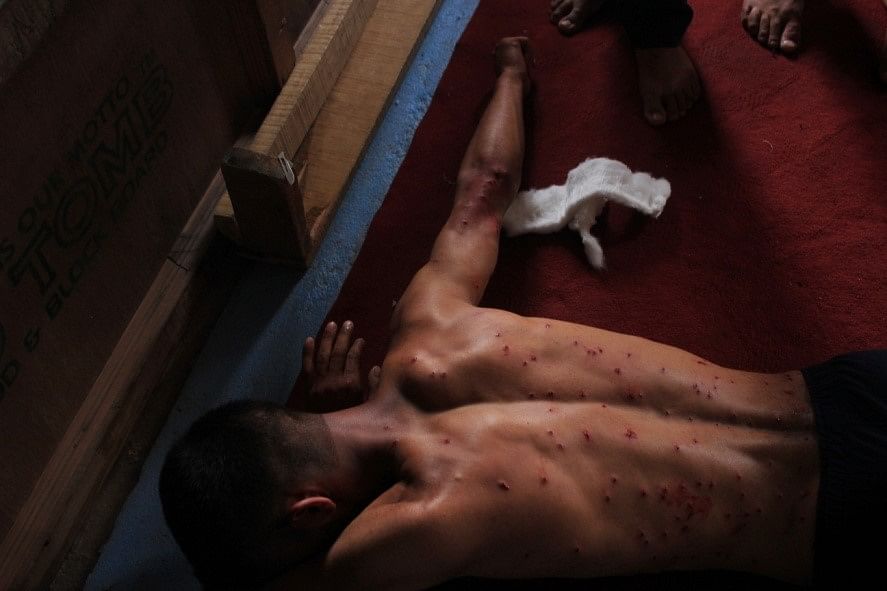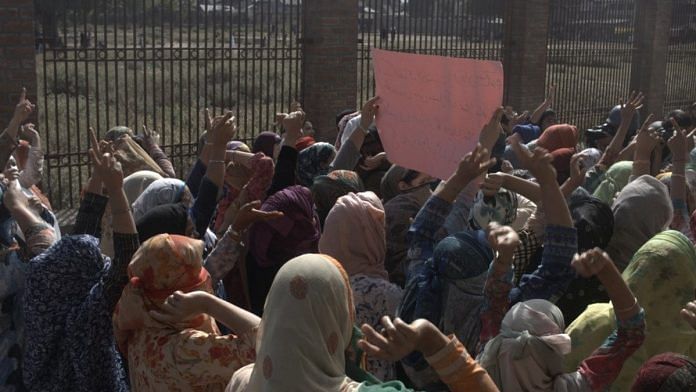With so much happening in Kashmir since 5 August, when the Narendra Modi government unilaterally revoked Article 370 and bifurcated the state of J&K, putting the entire state under a lockdown, all sides are trying to push their ideologies and propaganda. In such scenarios, the truth often takes a back seat.
On 26 September, ThePrint published an article titled “I went to meet pellet gun victims in Soura, the new epicentre of Kashmir’s anger” by Abhijit Iyer-Mitra on the Anchar region of Srinagar, which has been witnessing protests and resistance since 5 August. The author basically went on what seemed to be a ‘disappointing’ search for pellet victims in Anchar. He also questioned the existence of other crises, like medicine shortages.
“I was there to look at verifiable injuries, not listen to narratives,” he wrote. On the face of it, this seemed like an objective quest for truth, unclouded by bias. It is true that the voice of local people in Anchar is missing in mainstream media. But as the article unfolded, it was clear that the writer was pushing his own narrative, based on scattered and piecemeal anecdotal evidence. With a splash of misogyny too. He described the women of Anchar as “feisty”, non-burkha clad, and “happy to talk to a stranger”. Gasp. He described a woman in a hospital, who he didn’t directly converse with, giggling about the innocence (or lack thereof) of a pellet victim.
The author described local people as being prone to hyperbole and “exaggeration”.
It is this callous approach and lack of empathy and understanding that have been one among the many “verifiable injuries” inflicted upon the people of the Valley particularly since 5 August, and for decades in general.
In the midst of all this, there are also certain “facts” that the author has put forth based on his visit. Having been there around the same time (I visited Anchar for four consecutive days from 12-15 September), let’s examine some of these.
Also read: I went to meet pellet gun victims in Soura, the new epicentre of Kashmir’s anger
Facts and findings
The first factual inaccuracy crops up in the date of the clash mentioned in the article. The author said he was there to witness the aftermath of 12 September clashes between protesters and the police. “Unseen till the end remained the mysterious pellet gun victims of the 12 September clashes,” he wrote.
I was in Soura on 12 September and absolutely nothing happened that day. However, the next day, 13 September (Friday), residents took out a protest march after offering prayers at the Jenab Sahib shrine. This is when I saw the police firing pellets at them. An inaccuracy in date may seem like a small discrepancy, but in a “fact-finding trip”, if the most basic fact itself is incorrect, it raises alarms regarding the reliability of the ‘facts’ that follow.
The author also posed two questions that he seemed unable to find answers to.
- “If troops aren’t allowed into Anchar, how exactly did this pelting-pelleting (with 40-200 injuries) happen?”
Here is the answer. The police station is just 2 kms from Anchar. The police can fire pellets from just outside the Anchar locality. When pellets are fired, they get dispersed over a distance of around 50 metres. That is how the police fired pellets without entering the locality. There was no stone-pelting on 13 September.
- Where are the victims?
Here they are. I took these photographs on September 13 between 3.45 pm and 4 pm. The pellets were fired at 3.30 pm.

These images also include pellet wounds of the “12-year-old boy” who according to the author “suffered superficial wounds to the back of his head”.

The medical crisis
While explaining the medical situation in Srinagar, the author described a man who found all medicines prescribed to him in the local pharmacy, without mentioning his ailment or the medicines he bought. This was followed by a generic claim about how Kashmir is not facing a medicine shortage.
To counter this with anecdotal evidence (since that seems to be the order of the day) that I gathered myself, a woman I know from Barbar Shah, the gateway to downtown Srinagar, visited the Sher-i-Kashmir Institute of Medical Sciences (SKIMS) twice to get medicines for her husband suffering from a tumour because she couldn’t find it in any local pharmacy.
The author also talked about a patient from Nubra who received “first-class treatment” at the hospital. The point the author missed out is that in addition to shortage of life-saving drugs, chronic patients of cancer, diabetes and those undergoing dialysis are the ones facing the maximum brunt of this lockdown. Recently, a urologist was detained because he spoke about precisely the same issue.
What the author, from the comforts of a chauffeur-driven car, did not seem to realise is that the inability to access a hospital in a shutdown is not just a result of blocked roads and barricades. Patients across Kashmir have been unable to avail of public transport services since 5 August.
Indeed, going around Srinagar (already a better spot for healthcare given that it is the capital) in a car with a driver, whom the author mentioned several times, is a privilege not everyone can afford.
Of course, it is worth mentioning that the article was written after restrictions were eased considerably. But under no circumstances can the situation in Kashmir be passed off as normal.
Also read: Kashmir internet lockdown hits Modi govt’s Ayushman Bharat as patients forced to pay bill
What I saw
On 12 September, there were no clashes or pellet firing in Anchar. The next day, I visited Anchar at 11 am. There were barbed wires on the narrow road leading to the locality. While entering Anchar through the SKIMS side, a few policemen stopped me and asked me where was I going and why.
On finally reaching Anchar, I spent time with the local people – a few girls in the house I visited were preparing posters for the post-namaz rally. At 1:30 pm, we went to Jenab Sahib and offered namaz. At 2:15 pm, men had started gathering in the lawns of the complex while women gathered near the women-only masjid.
Exactly 10 minutes later, they all started sloganeering and marching together. This went on for nearly an hour. Several media-persons were present to cover it. After the rally was over and protesters returned to Jenab Sahib – some chose to just sit on the streets – pellets were fired.
Five people were injured and immediately rushed to the Jenab Sahib complex for treatment. People of Anchar do not send the injured to hospital fearing arrests. However, the 12-year-old boy, whose injuries the author described as “superficial”, had to be rushed to SKIMS because of the severity of the pellet injuries on the back of his head.

The local people told me that there have been instances when the police have not allowed ambulances from picking up victims, unless they are dropped to the police station first instead of the hospital. A report by Independent quotes a doctor saying that hospitals have been asked to keep admission of patients “related to clashes to a minimum” in order to keep the numbers down.
“But boy do they know how to spin a yarn and market it,” Abhijit Iyer-Mitra wrote about the people of Anchar. This vantage point, it seems, is also sheltered from the perils of self-awareness.
Also read: Food, business, schools: Kashmiris have devised coping mechanisms for everything
The author is a freelance photographer and a social activist based in Kashmir. Views are personal.




I don’t see how this article has countered Abhijit iyer-mitra. Firstly, if supposing he misprinted the date, its a very minor issue, you are inferring the entire article is wrong?
Also, for exotic ailments like tumours , there can be “shortages” in the pharmacy or hospitals. This is not only true in kashmir, but in a lot of other places too. The solution to that is that you place a special order and the pharmacy will try to get it. If you had come with a story that a more in demand medicine is unavailable, you would be seen as not just peddling kashmiri media propaganda.
Are the Indian forces crazy to fire the pallets for no reason? What are they supposed to do if the stones are being pelted at them? At one point of time Punjab was worst than what Kashmir is today. It got resolved, How??? The rite of the of the government must run. There were no mobile and internet in the late 90’s and world did not come to an end then. The violence by anti-government forces has be crushed and any thing that helps encourage or support it must be curtailed. Let nobody ask for relaxation in any form unless they guarantee that it will not further the violence.
All those who claim the have right to ask questions must understand that for stupid question they will only get stupid answers. Please experience a stone hit on head and then advise how to react.
If the other story was swinging one away this story is swinging the other way. what is missing is the story from the centre and this is why the government must lift the communications block so that we read reports and news from everywhere. The rumours will stop and it will be better in the long run!
What garbage ? 50m is the upper limit and dispersal starts at around 20m and some of those wounds do look superficial. People who don’t know much about guns may buy this article but it is clearly misinformed. This over the top catastrophizing is ridiculous. Too many people who should be doing poetry are in journalism and produce narratives to tug heart strings rather write clear eyed ground reports. Iyer-Mitra may have it all wrong but you sound ill informed on the basics of things you present as authoritative.
In hindsight, wouldn’t it have been better for GOI to remove 370 without imposing the curfew, even if it was reluctant to adopt a bi-partisan approach to revocation? At worst, it could have been like Hong Kong. But then this is a government with a leader having 56″ whatever, and therefore shouldn’t be shy of taking all the flak from all kinds of stakeholders – domestic and international – and manage it. Curtailing all sorts of freedom is only worsening the situation, and may lead to irreversible alienation.
This author can go PoK to see and find how the innocent peoples are suffering because of pak inhuman activities? Why they involved in protest or any other unacceptable activities? They will know they will be punished by military if they involved in any unusual protest, then why they are doing. So they are suffering.
Kudos to The Print for publishing this article. The recent opinion pieces from Mitra (Goebbels) are clearly (Biryani) Doval dictated and we needed somebody like you to counter this propaganda. Keep up the good work.
How we trust you. Aren’t you the same Jihadi mentality people who wants to keep pot boiling.
Abhijit Iyer-Mitra is carrying his own view in the two sockets meant for eyes. A counter view is either layered below or carefully ignored in his piece
This article is just as biased and slanted as the one by Mr. Iyer.
However, such “stories” gain traction only when there is a paucity of reliable information from on the ground reporters. The earlier the restrictions are lifted the better it would be for everyone. Exaggerated reports (on both sides) would give way to factual and objective reports.
Here we go the claims and counterclaims battle starts again! Honestly don’t know who to believe anymore. Regardless of whose version is factual, this has gone on for too long now, these are Indian citizens and its the govt of India’s responsibility to make things right. Sorry Kashmiri sisters and brothers!
There also continue to be – despite bland denials – reports of young people being brutalised by soldiers. One says this not just as a dove and a compassionate human being but as a pragmatic verity. All these acts are weakening our hold over the Valley. Recall the savagery of the Narasimha Rao years. If an exceptional burst of unremitting force could have solved the problem once and for all, Kashmir would not have continued to fester. As far as the media is concerned, to the extent it is allowed to report from the trenches, it should be true to the salt of its profession. The government has its own PR department. It need not become a force multiplier, accepting hospitality, chopper rides, intrernet access and whatever other goodies may be on offer.
The author seems to have a fixed views on different communities living in Kashmir. A non-partisan outlook seems to be missing. The article dated 23rd June and the present one bear its testimony. It would be interesting to have an article from the same author on POK.
Totally agree. I think the writer should write an article on Central African Republic too , because the worlds largest democracy needs to justify itself with “whataboutery “ .
Nobody is justifying we are taking precautionary steps, then where cones the whataboutery here?
And the God aka Deb is clueless whether to agree or not.